-
In 1982, Mahoney et al.[1] discovered the
$ {\rm{\gamma }} $ rays with an energy of 1.809 MeV in the interstellar space due to the decay of 26Al. 26Al is an unstable nucleus (with a half-life of about$ 7.2\times 10^{5} $ a), which decays into the excited states of 26Mg by${\rm{\beta }}^{+}$ decay or electron capture, and a 1 809 MeV$ {\rm{\gamma }} $ ray is emitted during the deexcitation process of the first 2+ state of 26Mg. So, by detecting the flux of this$ {\rm{\gamma }} $ ray, the abundance of 26Al in the interstellar can be reckoned[2]. Based on astronomical observations, Diehl et al.[3] estimated that the abundance of 26Al in the interstellar is$(2.8\pm 0.8)M_{\odot}$ . The origin of such a large amount of aluminum has attracted widespread attention[4] and become an open problem in nuclear astrophysics.According to the theoretical studies of nuclear astrophysics, the abundance of interstellar aluminum is mainly contributed by the nucleosynthesis in the following sites, type II supernovae[5-6], AGB stars[7-8], nova[9-12], Wolf–Rayet stars[13], and low energy heavy cosmic rays[14-15]. It is worth noting that Peng et al.[16-17] proposed an alternative way of nucleosynthesis for 26Al from both SNII and SNI
$ _{a} $ . The Gamma-Ray Imaging Spectrometer(GRIS) data indicate that AGB stars are a non-negligible site. Two evidences support that AGB stars play an important role in the origin of interstellar 26Al. The first one, the high 26Al/27Al ratios observed in the silicon carbide(SiC) grains around the majority of AGB stars[18]. The second one, circumstellar spectroscopy observed the 26Al around the nearest carbon star IRC+10216[19].The nucleosynthesis study of AGB stars shows that 26Al is synthesized at the bottom of the H combustion shell of the AGB stars(Hot Bottom Burning, referred to as HBB) through the NeNa cycle and the MgAl cycle[4]. Therefore, Mowlavi and Meynet[7] proposed that AGB stars might also be the main contributor to the interstellar 26Al. They gave a detailed research on the production and destruction process of 26Al in AGB stars and found that at the HBB of massive (
$M \!> \!4M_{\odot}$ ) AGB stars a large amount of 26Al could be synthesized, so HBB is likely to be the main site for the synthesis of 26Al. In addition, according to Wasserburg et al.[20], AGB stars with initial mass$ M $ =$ 1.5 \sim 3M_{\odot} $ can also effectively synthesize 26Al. Due to the existence of divergence and the update of nuclear reaction rates, it is necessary to re-analyze and calculate the nucleosynthesis of 26Al in AGB stars, which is also one of the main purposes of this article. Another main purpose of this article is to analyze the sensitivity of the nuclear reaction rates associated with 26Al nucleosynthesis, and to identify which nuclear reactions having more impact on the yield of 26Al. It should be pointed out that the sensitivity of the nuclear reactions relevant to the 26Al nucleosynthesis in the stage of explosive neon–carbon burning in the massive stars has been systematically studied by Iliadis et al.[21]. In this work, we focus on the steady combustion stage of the 3$ M_{\odot} $ AGB stars.This paper studies the nucleosynthesis of 26Al and the sensitivity of related nuclear reactions in 3
$ M_{\odot} $ AGB stars. In order to calculate the abundance of 26Al, first of all, an entire reaction network from carbon to silicon isotopes is constructed. This reaction network contains 25 nuclides and 102 nuclear reactions ranging from 12C to 40Si. Furthermore, a related nuclear reaction network equation system is established, which is a highly stiff differential equation system[22], and the coefficient of the network equations is the reaction rates of nuclear reactions. Using the semi-implicit Runge-Kutan method[23], we establish the relevant calculation program and give the numerical solution of the network equations. Our calculation results show that 26Al can be effectively synthesized and subsequently consumed by a series of nuclear reactions in AGB stars, and reaction flow calculations show that the MgAl cycle has a positive effect on the synthesis of 26Al. Then, the main nuclear reactions involved in the nucleosynthesis of 26Al are divided into three types, namely (n,$ {\rm{\gamma }} $ ), (p,$ {\rm{\gamma }} $ ) and ($ \alpha ,\, {\rm{\gamma }} $ ), and the sensitivity analysis of the reaction rates of these nuclear reactions is carried out in detail by using our calculation program. With the variable-controlling approach, the reaction rate of one nuclear reaction is changed from$-20$ % to 20% each time, with each step increasing by 5%. By changing the step once, the corresponding differential equations can be solved to obtain the 26Al abundance variation curve. We define sensitivity as the sum of the product of the function value of the 26Al abundance curve node and the step length of the differential equation system. In fact, this definition of sensitivity is equivalent to the Euclidean norm of the function. Therefore, the sensitivity of the corresponding curve after changing the step length can be obtained, and the sensitivity change curve can be obtained. In this way, we have identified the most influential reactions and they are: 25Mg(n,$ {\rm{\gamma }} $ )26Mg, 25Mg(p,$ {\rm{\gamma }} $ )26Al, 26Mg(p,$ {\rm{\gamma }} $ )27Al, 21Ne(p,$ {\rm{\gamma }} $ )22Na, 18O($ \alpha,\, {\rm{\gamma }} $ )22Ne and 22Ne($ \alpha,\, {\rm{\gamma }}$ )26Mg. Among all reactions, 25Mg(p,$ {\rm{\gamma }} $ )26Al is the reaction that has the greatest impact on the yield of 26Al.This paper is organized as follows. In Section 2, models and a nuclear reaction network are set up. In Section 3, the evolution chart of various nuclides and the MgAl cycle flow graph are presented. Section 4 concentrates on reaction rate sensitivity for the three types of nuclear reactions (n,
$ {\rm{\gamma }} $ ), (p,$ {\rm{\gamma }} $ ) and ($ \alpha ,\,{\rm{\gamma }}$ ). The nuclear reactions having the large influence upon 26Al abundance are distinguished. A summary and some conclusions are made at the end. -
The nuclear reaction(Fig. 1 for details) network contains 25 nuclides from 12C to 40Si and 102 nuclear reactions. The latest nuclear reactions and nuclear structure data come from the JINA Reaclib Database and CINA Database. All the data in the two databases are ongoing updates, publicly available and can be downloaded via web. The former is maintained by the Joint Institute for Nuclear Astrophysics(http://groups.nscl.msu.edu/jina/reaclib/db/), the latter is managed by the Computational Infrastructure for Nuclear Astrophysics(http://www.nucastrodata.org).
-
The various nuclear reactions in the stellar interior arouse chemical composition variation in the reaction zone, which is followed by the structural changes of pressure, temperature, density, and so on. Therefore, the fundamental cause of the stellar evolution is thermonuclear reactions. Unquestionably, it is crucial to investigate the variation of chemical composition, resulting from nuclear reactions, for the research of the evolution of the structure inside the stars. Assuming in the volume of 1 cm3 per second, the number of the element
$ i $ particle varies as follows:$$ \begin{split}& \frac{{\rm d}n_{i}}{{\rm d}t}= -\sum_{j}\frac{a_{i}}{1+\delta _{ij}}r_{ij}(m)+\sum_{k,l}\frac{b_{i}}{1+\delta_{kl}}r_{kl}(i),\\ & \delta_{ij}= \left\{\begin{matrix} 0,~i\neq j\\1,~i = j, \end{matrix}\right. \quad \delta_{kl} = \left\{\begin{matrix} 0,~k\neq l\\1,~k = l, \end{matrix}\right. \end{split} $$ (1) where
$ r_{ij}(m) $ is the total number of nuclear reactions in which$ i $ target nuclides interact with$ j $ incident particles to generate$ m $ particles. In other words, the total number of$ i $ particles consumes in 1 cm3 volume per second.$ r_{kl}(i) $ is similar to$ r_{ij}(m) $ ,$ r_{kl}(i) $ represents generation. In Eq.$ (1) $ ,$ a_{i} $ denotes the number of particles involving and consuming in a nuclear reaction, and similar to$ a_{i} $ ,$ b_{i} $ denotes production. By introducting a new variable,$ Y_{i} = X_{i}/A_{i} $ , where Yi is the element abundance, the particles density can be written as:$$ n_{i} = \frac{\rho X_{i}}{A_{i}}N_{A} = \rho N_{A}Y_{i},$$ (2) where,
$ \rho $ ,$ X_{i} $ ,$ N_{A} $ and$ A_{i} $ are density, elemental mass fraction, Avogadro constant and the atomic weight of the element, respectively. In Eq.$ (1) $ ,$ r_{ij}(m) $ and$ r_{kl}(i) $ can be expressed as follows:$$ r_{ij}(m) = n_{i}n_{j}\langle\sigma\nu\rangle_{ij},\quad r_{kl}(i) = n_{k}n_{l}\langle\sigma\nu\rangle_{kl}, $$ (3) where,
$ \langle\sigma\nu\rangle_{ij} $ denotes the nuclear reaction rate of$ i $ particles and$ j $ particles. Combining Eq.$ (2) $ and Eq.$ (3) $ , Eq.$ (1) $ can be expressed as:$$ \begin{split} \frac{{\rm d}Y_{i}}{{\rm d}t} =& -\rho N_{A}\sum\limits_{j}\frac{a_{i}}{1+\delta _{ij}}Y_{i}Y_{j}\langle\sigma\nu\rangle_{ij}+\\ &\rho N_{A}\sum\limits_{k,l}\frac{b_{i}}{1+\delta_{kl}}Y_{k}Y_{l}\langle \sigma\nu\rangle_{kl}\mathbf{}. \end{split} $$ (4) Here,
$ a_{i} = b_{i} = 1 $ and$ \delta_{ij} = \delta_{kl} = 0 $ . The abundance of$ _{2}^{4} $ He particles is almost unchanged in 3$ M_{\odot} $ AGB stars. Therefore, this Eq.$ (4) $ can be expressed as follows:$$ \begin{split} \frac{{\rm d}Y_{j}}{{\rm d}t} =& \rho Y_{\alpha}\sum(N_{A}\langle\sigma\nu\rangle_{i\alpha}Y_{i}-N_{A}\langle\sigma\nu\rangle_{j\alpha}Y_{j})+\\ & \sum(Y_{i}\lambda_{ij}-Y_{j}\lambda_{ji})+ N_{\rm n}(\langle\sigma\nu\rangle_{in}Y_{i}-\\ &\langle \sigma\nu\rangle_{jn}Y_{j})+ N_{\rm p}(\langle\sigma\nu\rangle_{ip}Y_{i}-\langle\sigma\nu\rangle_{jp}Y_{j}),\end{split} $$ (5) where,
$ N_{\rm n} $ and$ N_{\rm p} $ are the density of neutrons and protons, respectively. In Eq.$ (5) $ , each term represents the effect on nuclear reactions with$ \alpha $ particles,$ \beta^{\pm} $ , the neutron and the proton. -
All equations are established on the basis of the nuclear reaction network, in which the coefficient is the nuclear reaction rates. The attribute of equations, high stiffness, is determined by greatly different reaction rates’ magnitude. The numerical solution of the semi-implicit Runge-Kuta method is as follows:
For a problem[24]:
$$ \left\{\,\begin{aligned} &y'=f(t,y),\;\;\;a\leqslant t\leqslant b \\& y(a) = \eta \end{aligned}\right., $$ (6) the numercial solution format can be determined by the following forms
$$ \begin{split} y_{n+1} =& y_{n}+w_{1}k_{1}+w_{2}k_{2}\\ k_{1} =& h[1-ha_{1}A(t_{n},y_{n})]^{-1}f(t_{n},y_{n})\\ k_{2} =& h[1-ha_{2}A(t_{n}+c_{2}h,y_{n}+c_{21}k_{1})]^{-1}\times\\& f(t_{n}+b_{2}h,y_{n}+b_{21}k_{1}),\\ \nonumber\end{split} $$ where,
$ h $ represents the step length.$ a $ ,$ b $ ,$ c $ ,$ w $ are all coefficients, which have a lot of groups of values. The parameters are chosen here$$ \begin{split} a_{1} = &1+\frac{\sqrt{6}}{6} = 1.408\,248\,29,\\ a_{2} =& 1-\frac{\sqrt{6}}{6} = 0.591\,751\,71,\\ b_{21} =& c_{21} = \frac{-6-\sqrt{6}+\sqrt{58+20\sqrt{6}}}{6+2\sqrt{6}} = 0.173\,786\,67,\\ b_{2} =& c_{2} = 0.173\,786\,67,\\ w_{1} =& -0.413\,154\,32,\\w_{2} = &1.413\,154\,32. \end{split}$$ Rosenbrock’s semi-implicit Runge-Kutta method, which avoids iteration and retains the stability of the calculation format, is chosen to solve the equations. It greatly improves the efficiency of code execution.
-
In HBB of 3
$ M_{\odot} $ AGB stars, the key physical parameters are the density$ \rho $ =$ 1\;500 $ g/cm3, the burning temperature$ T $ =3×108 K and the initial mole abundances of$ Y_{0} $ (4He)=0.175 and$ Y_{0} $ (12C)=0.014, and other relevant nuclide abundance values are given according to the Ref. [25]. The injection way of 13C is gradual, which keeps neutron density stable[26]. In low-mass AGB stars, the neutron value is taken as$ n $ =107 cm–3 that is mainly from nuclear reactions 13C($ \alpha $ , n)16O and 18O($ \alpha $ , n)21Ne[27]. The proton source is included in the reaction network, especially the nuclear reactions 14N(n, p)14C and 26Al(n, p)26Mg.Fig. 2 shows, the abundance of 19F firstly increases over time due to the role of reaction 14N(
$ \alpha ,\,{\rm{\gamma }}$ )19F. The curve of 19F quickly begins to decline because it primarily produces 22Ne. It can be seen that the abundance curve of 25Mg is stable at first, and then it increases mainly because of the 22Ne($ \alpha $ , n)25Mg reaction. The abundance curve of 26Al gradually decreases via 26Al(n, p)26Mg and 26Al(${\rm{\beta }}^{+}$ )26Mg, while the content of 26Mg subsequently increases. 23Na is the seed for the synthesis of 27Al, so 27Al nuclide abundance remains stable. 24Mg abundance can also rise and form the MgAl cycle by the reaction 27Al(p,$ \alpha $ )24Mg. Finally, the reduction of raw materials leads the 26Al consumption more than production, and its abundance decreases rapidly. -
The nuclear reaction network equations describe the dynamic changes of each nuclide in the network. By calculating the reaction flow between two nuclides, we can see the dynamic changes between the various nuclides more clearly.
For two nuclides, the reaction flow is defined as follows:
$$ F_{ij}(t) = \int\nolimits_{0}^{t}[Y_{i}(i\rightarrow j)]{\rm d}t, $$ (7) where,
$ F_{ij} $ denotes reaction flow, and$ Y_{i}(i\rightarrow j) $ is the abundance of nuclide$ i $ converted to nuclide$ j $ . The entire time span is integrated to find the main path for the synthesis of 26Al. Within$ 10^{8}s $ , the flow chart of the MgAl cycle is shown in Fig. 3.As shown in Fig. 3, the MgAl cycle is presented as 24Mg(n,
$ {\rm{\gamma }} $ )25Mg(p,$ {\rm{\gamma }} $ )26Al($ \beta^{+} $ )26Mg(p,$ {\rm{\gamma }} $ )27Al(p,$ \alpha $ )24Mg. -
In the nuclear reaction network equations, the decisive factor is the reaction rates. The reaction rates determine the yield of each nuclide and the direction of reaction flow. The reaction rates can be obtained by experiments or by theoretical models if the experimental data are scarce. Whether it is experimental measurements or theoretical estimations, there are certain errors in the rates. Therefore, sensitivity analysis of the reaction rates in the network is very important, especially through sensitivity analysis, we can find out nuclear reactions that have a relatively large impact on the abundance of 26Al. This can help the experimentalists to choose the important reactions which need more precise measurements. As for sensitivity calculation, under the variable-controlling approach, only the rate of one nuclear reaction is altered from –20% to 20%, increasing by 5% per time for eight times to measure the sensitivity of 26Al. By drawing, the impact of each nuclear reaction on 26Al abundance can be compared intuitively. Expression of the sensitivity metric is as follows:
$$ \begin{array}{l} D^{2} = \sum(F-F^{0})^{2}\cdot h,\end{array} $$ (8) where,
$ D $ represents the sensitivity metric;$ F^{0} $ is the 26Al abundance from the original reaction rate;$ F $ is the 26Al abundance with varying the reaction rate;$ h $ is the step size. To compare the sensitivity of each nuclear reaction more clearly, the y-coordinate sensitivity measure D is logarithm base$ 10 $ and the x-coordinate is –20%~20%, increasing by 5% each time. The sensitivity analysis for three types of nuclear reactions (n,$ {\rm{\gamma }} $ ), (p,$ {\rm{\gamma }} $ ) and ($ \alpha,\, {\rm{\gamma }}$ ) is studied. The results are presented Fig. 4~7 as showing below. -
Fig. 4 shows that 25Mg(n,
$ {\rm{\gamma }} $ )26Mg has the greatest impact on the synthesis of 26Al and 26Al(n,$ {\rm{\gamma }}) $ 27Al takes the second place. Compared with other nuclear reactions, the impact of 25Mg(n,$ {\rm{\gamma }} $ )26Mg on 26Al is larger at least one order of magnitude than that of the other (n,$ {\rm{\gamma }} $ ) reactions. Among all the (n,$ {\rm{\gamma }} $ ) reactions, the sensitivity of 26Al(n,$ {\rm{\gamma }} $ )27Al is in second place. Thus, it can be considered that 26Al(n,$ {\rm{\gamma }} $ )27Al is one of the main nuclear reactions for consuming 26Al. -
Fig. 5 shows that the sensitivity of 25Mg(p,
$ {\rm{\gamma }} $ )26Al is the largest. It is found that the production of 25Mg(p,$ {\rm{\gamma }} $ )26Al to 26Al is at least five orders of magnitude higher than 22Na($ \alpha,\, {\rm{\gamma }}$ )26Al. The secondary important reactions are 26Mg(p,$ {\rm{\gamma }} $ )27Al, 21Ne(p,$ {\rm{\gamma }} $ )22Na, 22Ne(p,$ {\rm{\gamma }} $ )23Na, 12C(p,$ {\rm{\gamma }} $ )13N and 16O(p,$ {\rm{\gamma }} $ )17F($ {\rm{\beta }}^{+} $ )17O. Thereinto, 25Mg(p,$ {\rm{\gamma }} $ )26Al should be the prime target for future measurement. -
Fig. 6 shows that, in the type of (
$ \alpha,\, {\rm{\gamma }}$ ), the nuclear reactions that have a relatively large impact on 26Al are 18O($ \alpha ,\,{\rm{\gamma }}$ )22Ne, 22Ne($ \alpha,\, {\rm{\gamma }} $ )26Mg, 15N($ \alpha ,\, {\rm{\gamma }}$ )19F and 19F($ \alpha ,\, {\rm{\gamma }}$ )23Na.Finally, in order to obtain the overall impact of the three types of nuclear reactions on the yield of 26Al, we select several reactions with higher sensitivity in each type of reaction, and show in Fig. 7.
Fig. 7 shows that among all the three types of nuclear reactions, 25Mg(p,
$ {\rm{\gamma }} $ )26Al is the one that has the greatest impact on the yield of 26Al. Therefore, we recommend that nuclear experimentalists pay more attention to it. -
In 3
$ M_{\odot} $ AGB stars, the network calculation of 26Al nucleosynthesis and the sensitivity analysis of nuclear reaction data have been given. Firstly, we build a complete reaction network from carbon to silicon combing with the latest nuclear reaction rates. As the nuclear reactions proceed, the nucleosynthesis of 26Al is computed in detail, and the calculation of the reaction flow shows the existence of the MgAl cycle. Furthermore, we also analyze the sensitivity of three reaction types (n,$ {\rm{\gamma }} $ ), (p,$ {\rm{\gamma }} $ ) and ($ \alpha,\, {\rm{\gamma }}$ ) to the production of 26Al. The result indicates: the reaction rates of 25Mg(n,$ {\rm{\gamma }} $ )26Mg, 25Mg(p,$ {\rm{\gamma }} $ )26Al, 26Mg(p,$ {\rm{\gamma }} $ )27Al, 21Ne(p,$ {\rm{\gamma }} $ )22Na, 18O($ \alpha,\, {\rm{\gamma }}$ )22Ne and 22Ne($ \alpha,\,{\rm{\gamma }} $ )26Mg have the greatest impact on the nucleosynthesis of 26Al. In particular, the 25Mg(p,$ {\rm{\gamma }} $ )26Al reaction is the most important reaction of all, further experimental studies of this reaction are recommended.Acknowledgments This work is supported by the Excellent Course Project of Beijing University of Chemical Technology. The author sincerely thanks the anonymous reviewers for their excellent reviews and their valuable comments.
The Network Calculation of 26Al Nucleosynthesis in 3M⊙ AGB Stars and the Sensitivity Analysis of Nuclear Reaction Rates
-
摘要: 研究了3
$M_{\odot}$ AGB星中26Al核合成的网络计算和核反应率的灵敏度分析。结合最新的核反应率数据,建立了一个从碳到硅完整的核反应网络,计算了26Al的丰度。结果表明,26Al首先在AGB星中有效合成,随着核反应的进行,然后被一系列的核反应消耗。MgAl循环出现在26Al的网络中。我们将核反应网络中的主要核反应分为三类:(n,${\rm{\gamma }}$ ),(p,${\rm{\gamma }}$ )和($\alpha$ ,${\rm{\gamma }}$ ),并对核反应率的灵敏度进行了详细的分析。已经确定了每一类中最有影响的核反应,它们是25Mg(n,${\rm{\gamma }}$ )26Mg,25Mg(p,${\rm{\gamma }}$ )26Al,26Mg(p,${\rm{\gamma }}$ )27Al,21Ne(p,${\rm{\gamma }}$ )22Na,18O($\alpha$ ,${\rm{\gamma }}$ )22Ne和22Ne($\alpha$ ,${\rm{\gamma }}$ )26Mg。在目前网络所涉及的所有核反应中,25Mg(p,${\rm{\gamma }}$ )26Al是对26Al的产量有最大的影响,它值得核实验物理学家的关注。Abstract: The network calculation of 26Al nucleosynthesis in 3$M_{\odot}$ AGB stars and the sensitivity analysis of nuclear reaction rates have been investigated in this article. After establishing a complete nuclear reaction network from carbon to silicon, combined with the latest nuclear reaction rate data, we have calculated the abundance of 26Al. The results show that 26Al is effectively synthesized in the AGB stars at the beginning, but as the reaction proceeding, 26Al is consumed by a series of nuclear reactions. The MgAl cycle appears in the network of 26Al. We divide the main nuclear reactions in the reaction network into three categories (n,${{\gamma }} $ ), (p,${{\gamma }}$ ) and ($\alpha,\,{{\gamma }}$ ), and the sensitivity of nuclear reaction rates has been analyzed in detail. We have identified the most influential reactions in each type of nuclear reactions, they are: 25Mg(n,${{\gamma }}$ )26Mg, 25Mg(p,${{\gamma }}$ )26Al, 26Mg(p,${{\gamma }}$ )27Al, 21Ne(p,${{\gamma }}$ )22Na, 18O($\alpha,\,{\rm{\gamma }}$ )22Ne and 22Ne($\alpha,\,{\rm{\gamma }}$ )26Mg. Among all the nuclear reactions involved in the present network, 25Mg(p,${\rm{\gamma }}$ )26Al is the one that has the greatest impact on the yield of 26Al, which deserves the attention of nuclear experimentalists.-
Key words:
- 26Al abundance /
- AGB stars /
- nuclear reaction network /
- sensitivity analysis
-
-
[1] MAHONEY W A, LING J C, JACOBSON A S, et al. The Astrophysical Journal, 1982, 262: 742. doi: 10.1086/160469 [2] DIEHL R, TIMMES F X. Publications of the Astronomical Society of the Pacific, 1998, 110(748): 637. doi: 10.1086/316169 [3] DIEHL R, HALLOIN H, KRETSCHMER K, et al. Nature, 2006, 439(7072): 45. doi: 10.1038/nature04364 [4] LIU Honglin, LUO Zhiquan. Nuclear Physics Review, 2008, 25(1): 31. (in Chinese) doi: 10.11804/NuclPhysRev.25.01.031 [5] FUJIMOTO Y, KRUMHOLZ M R, INUTSUKA S. Monthly Notices of the Royal Astronomical Society, 2020, 497(2): 2442. doi: 10.1093/mnras/staa2125 [6] TIMMES F X, WOOSLEY S E, HARTMANN D H, et al. Astrophysical Journal, 1995, 449: 204. doi: 10.1086/176046 [7] MOWLAVI N, MEYNET G. Astronomy and Astrophysics, 2000, 361(3): 959. [8] FORESTINI M, CHARBONNEL C. Astronomy and Astrophysics Supplement Series, 1997, 123: 241. doi: 10.1051/aas:1997348 [9] JOSÉ J, HERNANZ M, COC A. The Astrophysical Journal, 1997, 479(1): L55. doi: 10.1086/310575 [10] KOLB U, POLITANO M. Astronomy and Astrophysics, 1997, 319(3): 909. [11] ARNOULD M, NORGAARD H, THIELEMANN F K, et al. The Astrophysical Journal, 1980, 237: 931. doi: 10.1086/157940 [12] CLAYTON D D. The Astrophysical Journal, 1984, 280: 144. doi: 10.1086/161978 [13] ARNOULD M, PAULUS G, MEYNET G. Astronomy Astrophysics, 1997, 321(2): 452. [14] GACHES B A L, WALCH S, OFFNER S S R, et al. The Astrophysical Journal, 2020, 898(1): 79. doi: 10.3847/1538-4357/ab9a38 [15] CLAYTON D. Nature, 1994, 368: 222. doi: 10.1038/368222a0 [16] WANG Peng, PENG Qiuhe, ZHANG Shuinai, et al. Chinese Physics Letters, 2006, 23(6): 1652. doi: 10.1088/0256-307X/23/6/082 [17] PENG Qiuhe. New Astronomy Reviews, 2006, 50(7): 481. doi: 10.1016/j.newar.2006.06.057 [18] CHERCHNEFF I, CAU P. Symposium-International Astronomical Union, 1999, 191: 251. doi: 10.1017/S0074180900203148 [19] GUELIN M, FORESTIN M, VALIRON P, et al. Astronomy and Astrophysics, 1995, 21(5): 321. [20] WASSERBURG G J, BUSSO M, GALLINO R, et al. Nuclear Physics A, 2006, 777: 5. doi: 10.1016/j.nuclphysa.2005.07.015 [21] ILIADIS C, CHAMPAGNE A, CHIEFFI A, et al. The Astrophysical Journal Supplement Series, 2011, 193(1): 16. doi: 10.1088/0067-0049/193/1/16 [22] TIMMES F X, HOFFMAN R D, WOOSLEY S E. The Astrophysical Journal Supplement Series, 2000, 129(1): 377. doi: 10.1086/313407 [23] ROSENBROCK H H. Computer Journal, 1963, 5(4): 329. doi: 10.1093/comjnl/5.4.329 [24] YUAN Xinding. Numerical Solution of Initial Value Problem of Rigid Ordinary Differential Equation[M]. Beijing: Science Press, 1987: 341. (in Chinese). [25] FORESTINI M, GORIELY S, JORISSEN A, et al. Astronomy and Astrophysics, 1992, 261(1): 157. [26] HOLLOWELL D, IBEN I J. The Astrophysical Journal, 1989, 340: 966. doi: 10.1086/167451 [27] STRANIERO O, GALLINO R, BUSSO M, et al. The Astrophysical Journal Letters, 1995, 440: L85. doi: 10.1086/187767 -














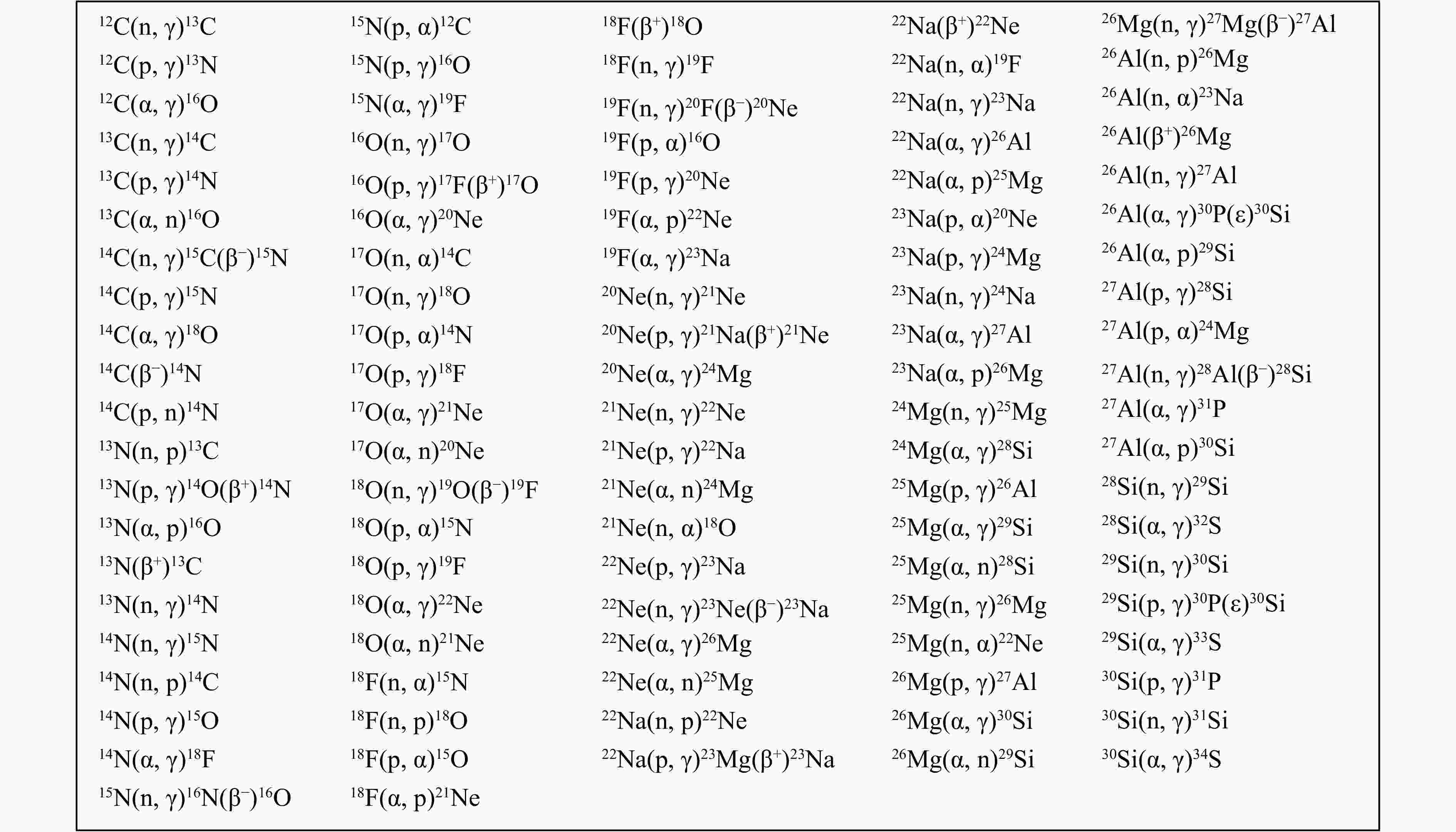
 下载:
下载:

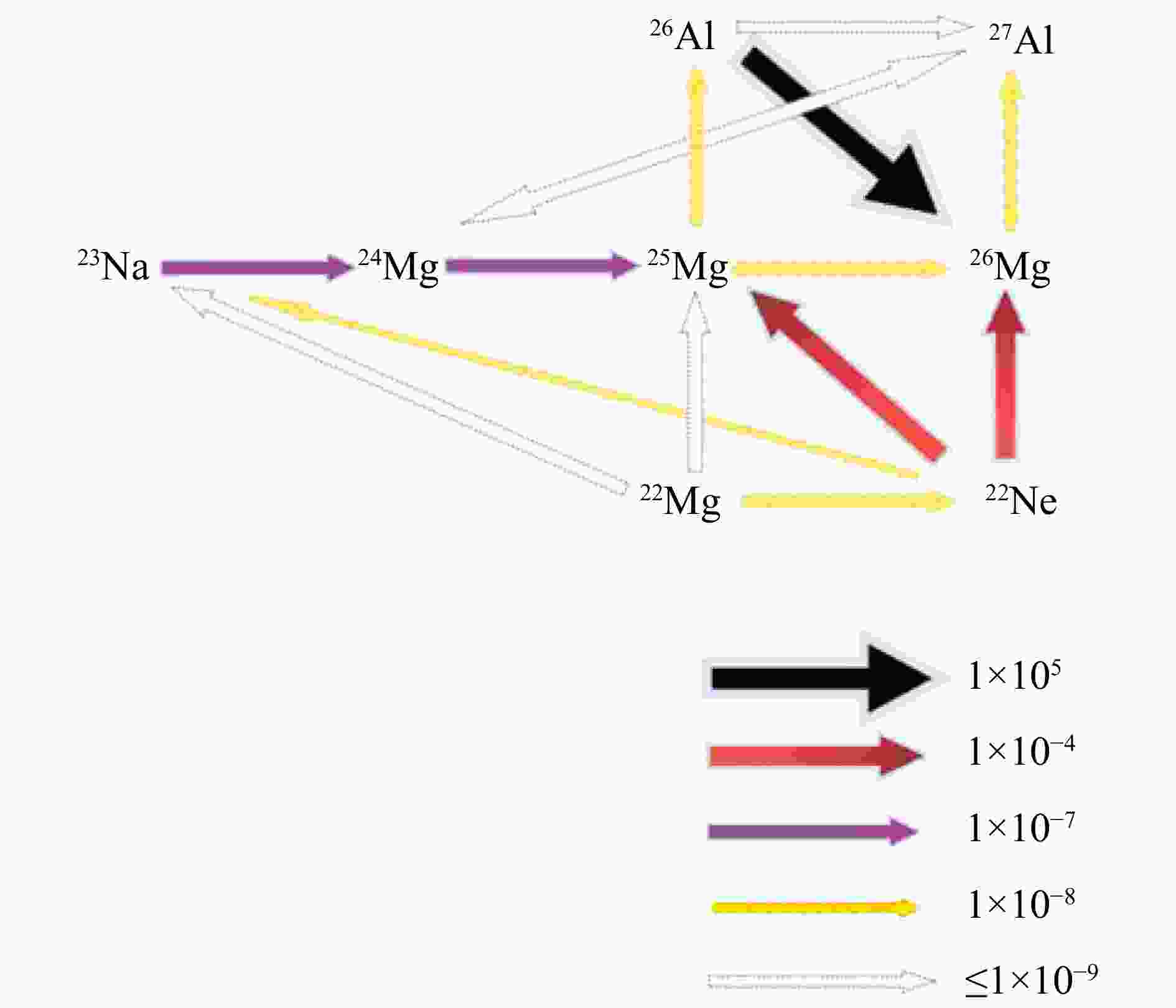
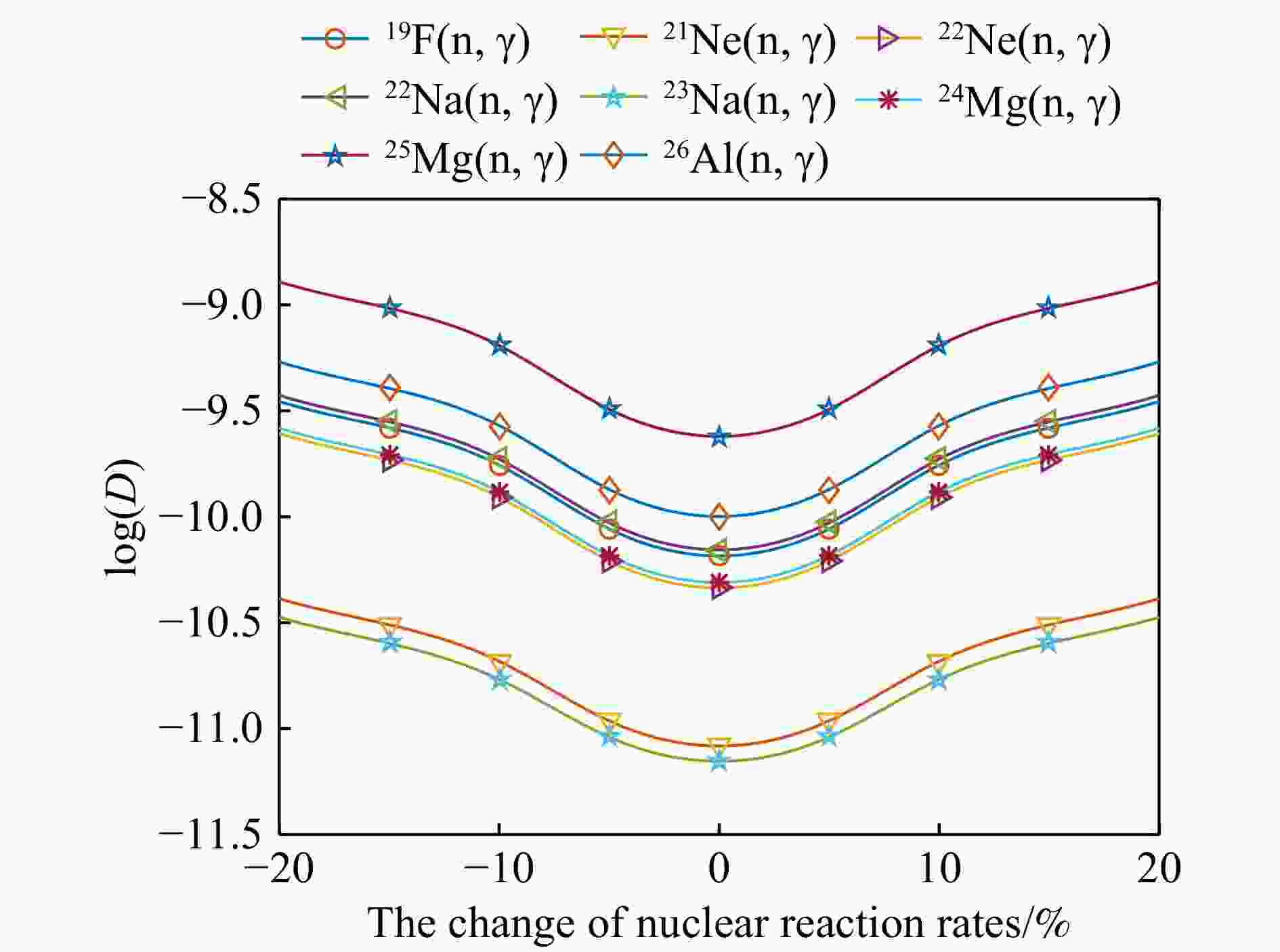

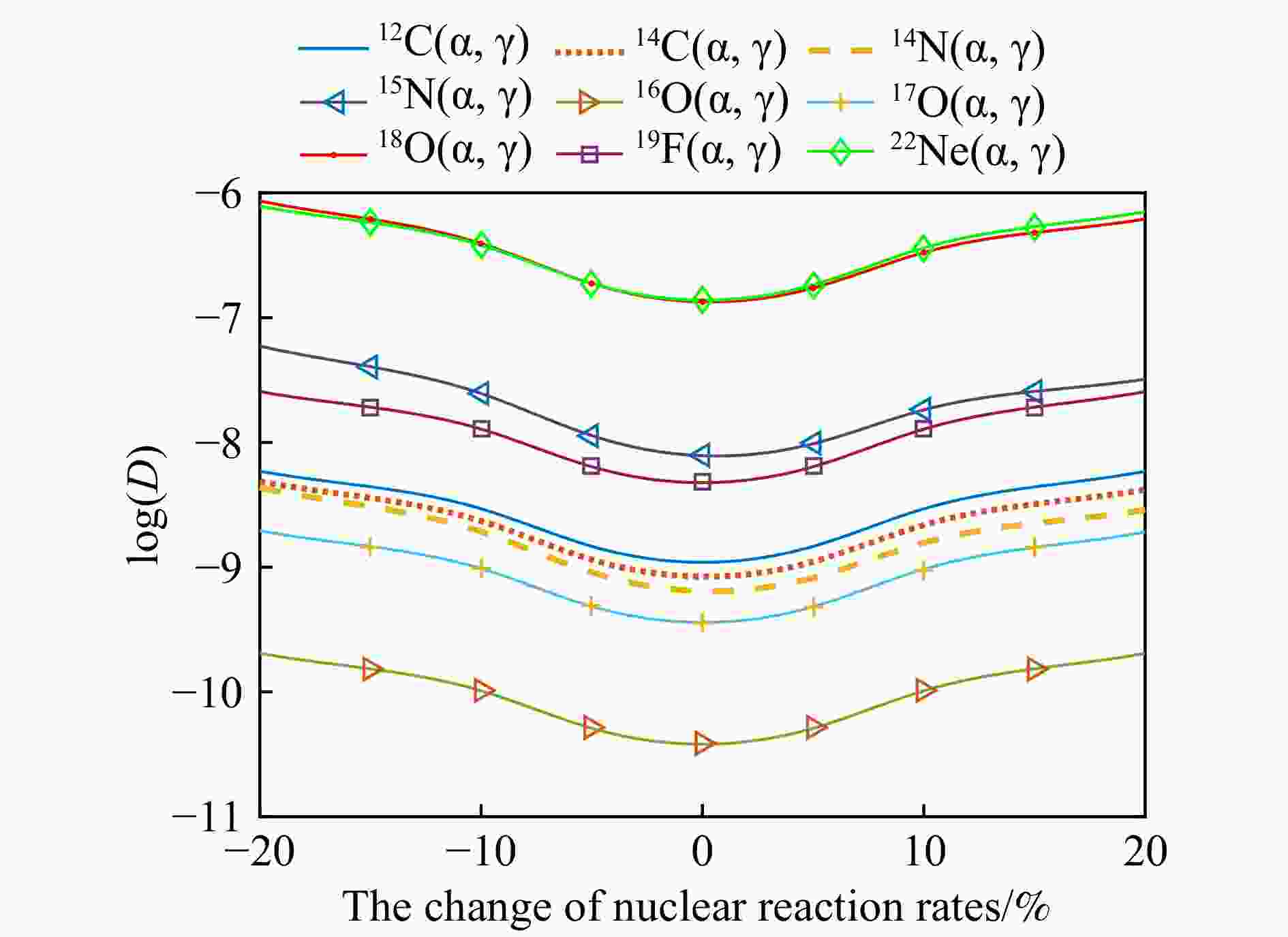

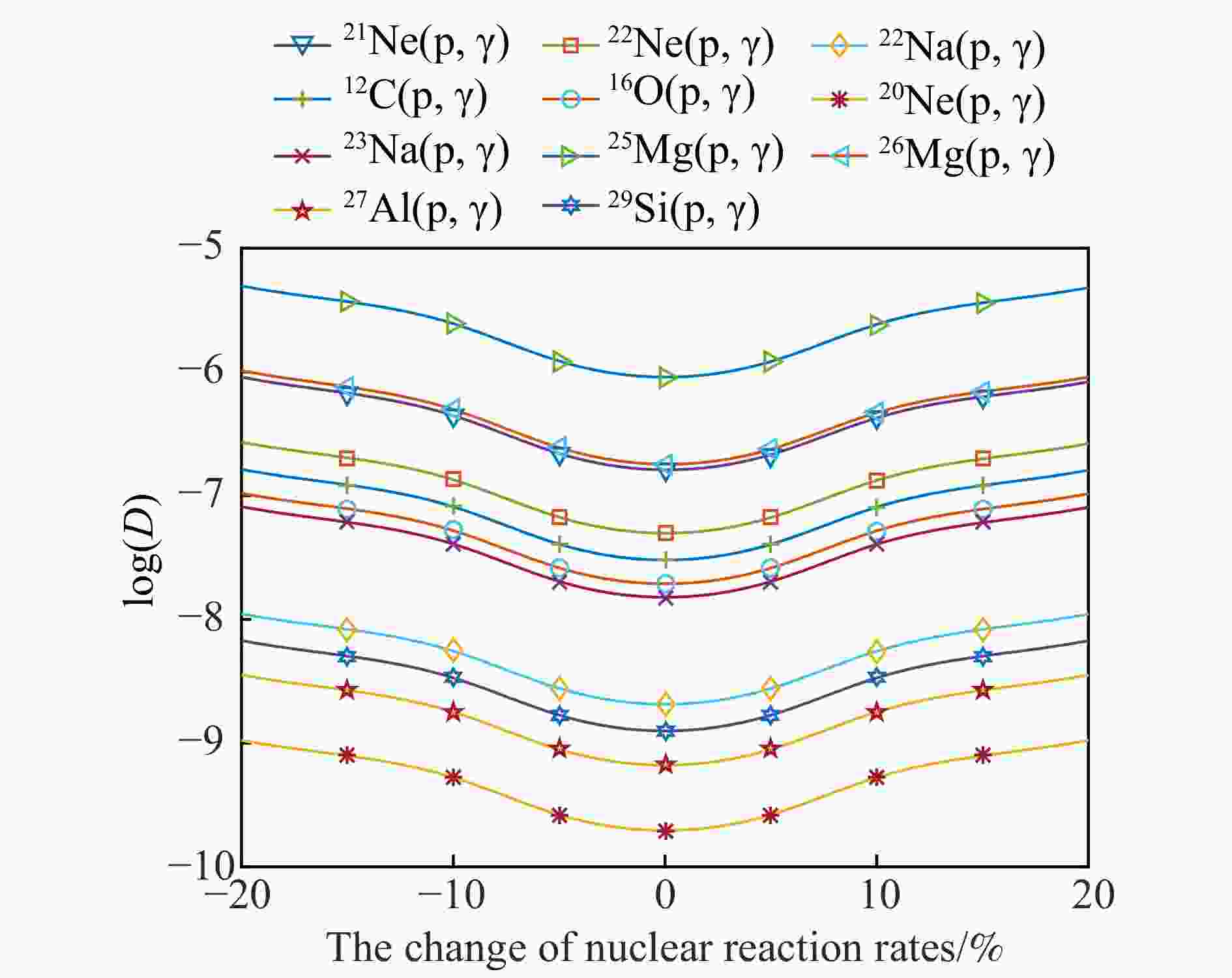

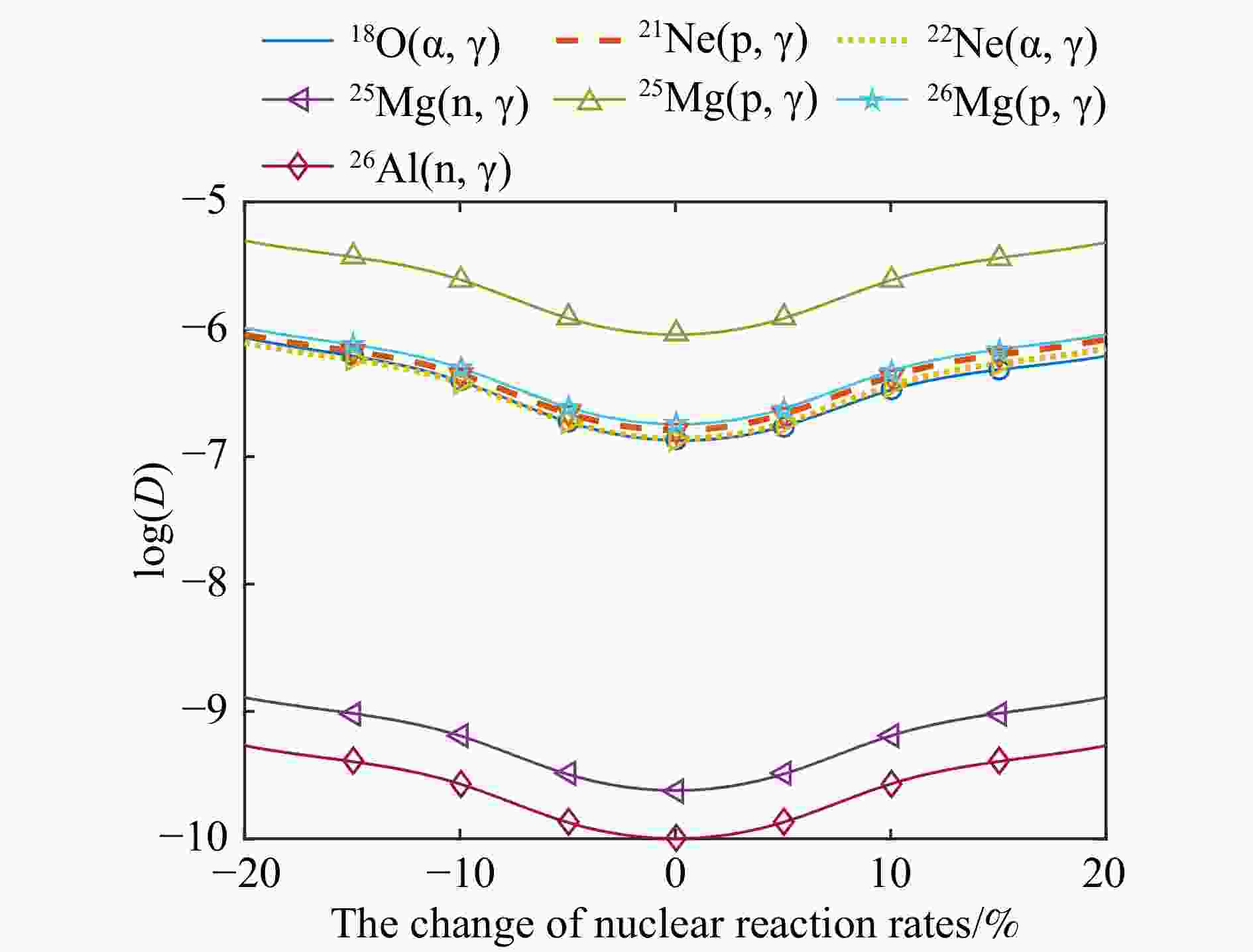




















































































































































 甘公网安备 62010202000723号
甘公网安备 62010202000723号